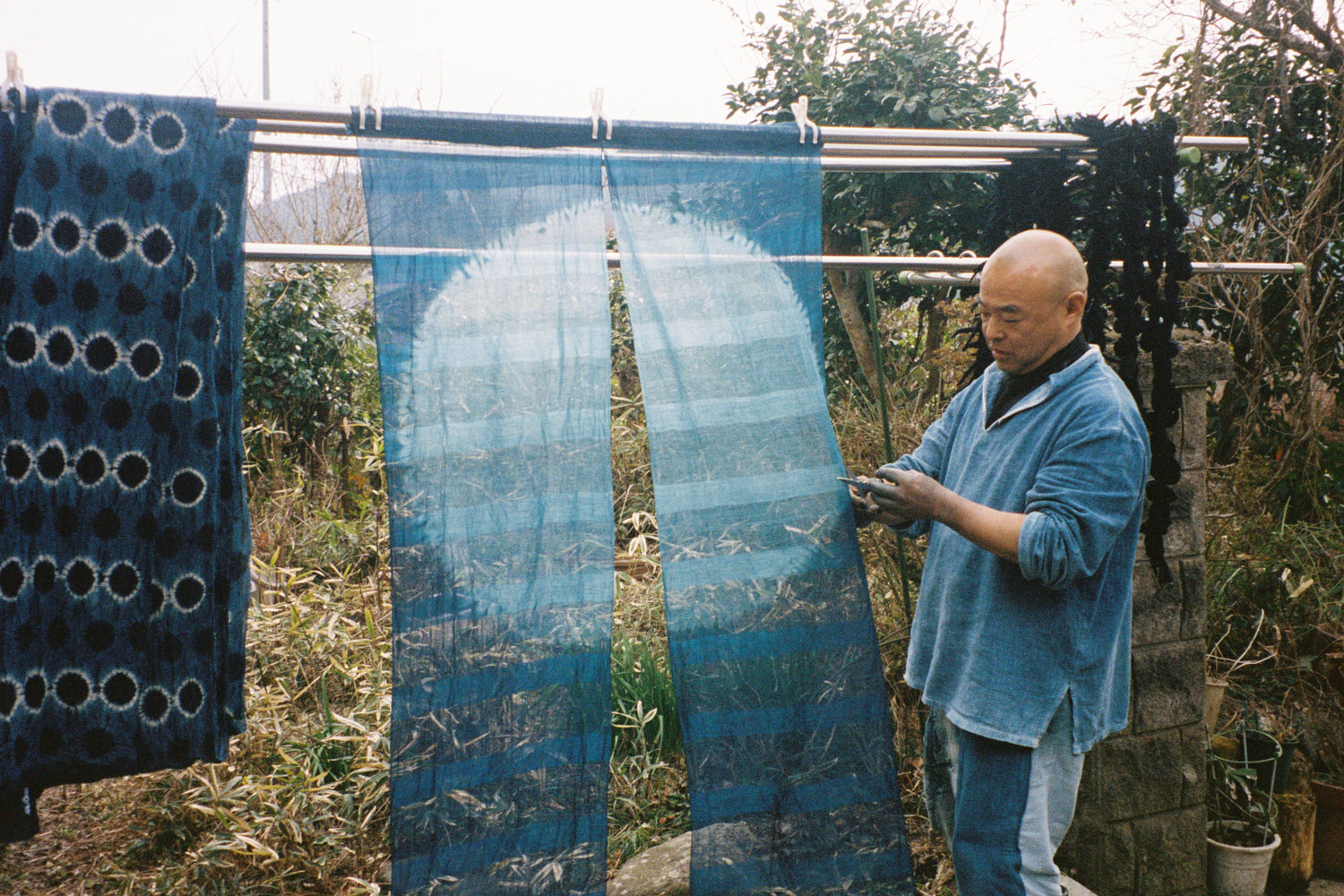"To dye with indigo is to work with something alive—an ancient blue that breathes, transforms, and connects us to the earth."
While in Kyoto, I had the honor of learning the ancient art of indigo dyeing from Kobo Ainoyakata—a master artisan dedicated to preserving this deeply rooted Japanese tradition. What I thought would be a hands-on creative session became something far more meaningful: a window into a slower, more intentional way of living and making.

The History of Aizome
Indigo dyeing, or aizome, dates back over 1,400 years in Japan. The color— known as “Japan Blue”—was worn by samurai, farmers, and everyday people alike. Indigo-dyed garments were prized not only for their beauty, but for their antibacterial and insect-repellent qualities.
This is a craft steeped in culture, philosophy, and ecology. It’s a living practice—one that connects the hands to the land, the past to the present.
“In Kobo’s hands, I saw what it means to keep tradition alive—with grace, humility, and reverence for the earth.”
Indigo as a Living Culture
What sets traditional Japanese indigo dyeing apart is the process itself: entirely natural, entirely alive. Kobo explained that the indigo vat isn’t just a dye—it’s a living culture.
The dye is made from the Polygonum tinctorium plant, whose leaves are fermented into sukumo. This fermentation creates a living indigo bath, maintained with wood ash lye, wheat bran, and water. No chemicals, no shortcuts. The vat requires daily tending—feeding, stirring, and watching like you would a sourdough starter or kombucha brew.
“The dye bath breathes. You have to listen to it.”
The Process
Under Kobo’s guidance, I practiced traditional shibori techniques—folding, binding, and twisting the fabric into patterns that would resist the dye. Then came the moment of transformation: dipping the cloth into the living vat, pulling it out green, and watching it oxidize into a deep, soulful blue as it met the air.
The transformation felt like alchemy—quiet and slow.
Why It Matters
In a world of synthetic dyes and mass production, Kobo’s work is a powerful reminder of how deeply craft can connect us to the earth. To learn from them was to remember what it means to work with your hands, with nature, and with time.
We need to protect and uplift these traditions—not just for their beauty, but for the values they carry. Kobo Ainoyakata is doing sacred work: keeping the blue alive.










